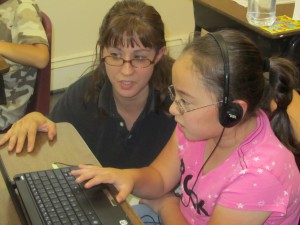IB-2012-A (March 2012)
Edited by: Pam Benigno and Ben DeGrow
PDF of full Issue Backgrounder
Scribd version of full Issue Backgrounder
Overview
In 2010 the Digital Learning Council, convened and co-chaired by former governors Jeb Bush (R – Florida) and Bob Wise (D – West Virginia), released the 10 Elements of High-Quality Digital Learning. The following year the national Digital Learning Now campaign unveiled a more detailed “Roadmap for Reform,” with nuts-and-bolts policies recommended for states to adopt. Digital learning is defined as “any instructional practice that is effectively using technology to strengthen the student learning experience,” including full-time online learning and blended learning models that provide instruction “at least in part, through online delivery with some element of student control over time, place, path, and/or pace.”
Nearly 50 Colorado online education leaders (including school district and charter school staff) and policy experts gathered Monday, January 23, 2012, to help craft a roadmap of digital learning policy priorities for the state. Co-sponsored by the Independence Institute and the Donnell-Kay Foundation, the event featured International Association of K-12 Online Learning (iNACOL) president and CEO Susan Patrick as keynote speaker and facilitator. Colorado Department of Education Assistant Commissioner Amy Anderson and former State Board of Education member Randy DeHoff served as co-facilitators.
Participants worked together to help identify Colorado’s leading digital learning policy priorities in three major categories: Access and Eligibility, Funding, and Assessment and Accountability. Given a list of policy options that included Digital Learning Now’s recommendations, participants selected those they saw as the most important for Colorado to pursue in the near term and to offer additional ideas or suggestions. Six small groups collaborated separately, two for each of the three major categories, before reporting to the large group and sparking discussion. A considerable number of insightful comments were shared, and a remarkable degree of consensus was achieved on many priorities.
Nearly all of the priority changes outlined below are selected directly from Digital Learning Now’s Roadmap for Reform. Participants at the January 23 meeting embraced the process of deciding which policies best suit our state’s students and educators. According to many of the state’s online leaders, the following policy changes would enhance opportunities for Colorado’s children to achieve educational success.








